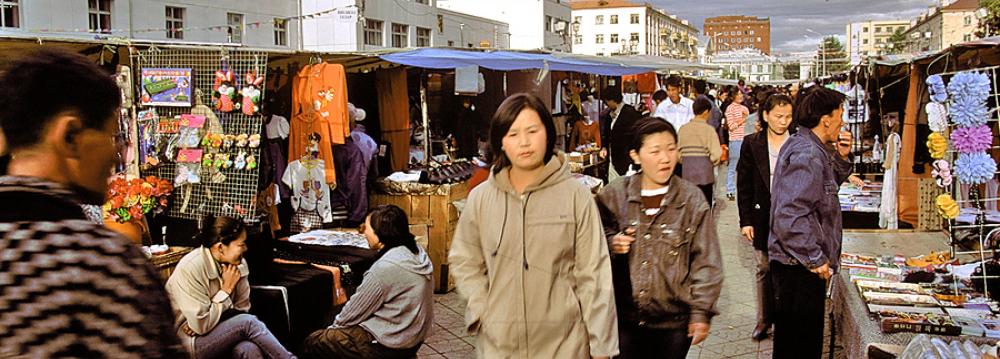Inside Mongolia’s largest open-air market in the capital city of Ulaanbaatar, it doesn’t feel like the economy is on the brink of collapse. Alleyways are packed with people selling carpets, fabric, clothes and nearly anything else you could think of.
But vendors here have had a front-row seat to an economy that has quickly gone from the world’s fastest growing to one of the slowest. Everyone here seems to have a riches-to-rags story, npr.org reported.
“Business is terrible,” says candy seller Erdenejargal. “More and more people are unemployed and they can’t afford anything. They ask me about the prices. I tell them. They leave.”
For 28 years, Erdenejargal worked for a construction company. Last year, her company, like many involved with building infrastructure, went bankrupt. And now she’s here in the market selling Russian candy out of the trunk of her tiny, rusted-out car.
She’s perched in front of a loudspeaker dangling from a storefront announcing chickens for sale—chickens she can’t afford. “The police chase me out of here, but if I don’t do this, we won’t have any money,” Erdenejargal says with a sigh. “I’ve got three children and my husband lost his job. This is the government’s fault–they borrowed so much, and it all disappeared.”
Mongolia, sandwiched between Siberia to the north and China to the south, is twice the size of Texas with just three million people. It’s a nation of nomadic herders.
China’s demand for coal helped Mongolia’s economy grow by 17.5% in 2011. This year, the World Bank forecasts it will grow by less than 1%.
Now Mongolia—nicknamed “Minegolia” for its vast mineral wealth—suffers as global prices for coal and copper plummet. Its mines are bleeding money. So is the government.
When its economy was booming five years ago, the Mongolian government went on a spending spree, issuing $1.5 billion worth of so-called “Genghis bonds” to build infrastructure. Much of the money was poorly spent. Several officials were revealed in the Panama Papers for holding secret offshore accounts. Now Mongolia’s debt is nearly 80% of its GDP.
Its currency, the tugrik, is in a free-fall. “Obviously, the immediate thing we can do is fix our budget. Cut our deficit as much as we can,” says Mogi Bontoi, who runs the market intelligence firm Cover Mongolia.
He says an IMF emergency bailout won’t be enough to prevent Mongolia from defaulting on billions of dollars worth of loans. Some of that debt is owed to its neighbor, China—whose economic and political influence many Mongolians fear, but seems poised to loan even more money to Mongolia.


